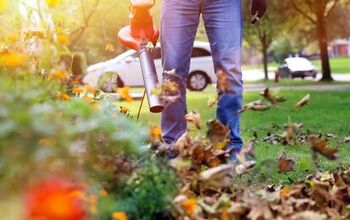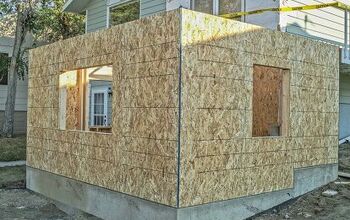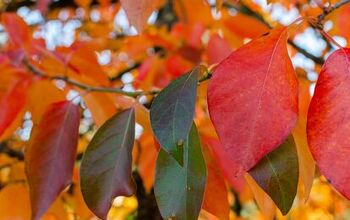Best Vegetables To Plant Before The First Winter Frost

Spring is the quintessential growing season for plants, including vegetables. Farmers and gardeners sow fields as soon as the soil is workable each spring, but this isn’t the only time of year you can plant vegetables in your garden. In fact, several plant varieties thrive when you plant them just before the first frost.
Some of the best vegetables to plant before the first frost for a spring harvest are garlic, peas, several varieties of beans, and asparagus. Some vegetables, including carrots, onions, and kale are frost-tolerant and can taste better when grown in cold conditions. Other vegetables that can survive occasional winter frosts and be harvested in the spring include kohlrabi, cabbage, various beans, and cauliflower.
If you like gardening in all four seasons, then knowing which vegetables to plant before the first frost of winter is a great way to keep your gardening hobby active. Gardening in the coldest months can be more challenging, but as long as your winters aren’t too severe and your soil doesn’t freeze, then some plants will grow. Keep reading to learn all the best vegetables to plant in the late fall.
14 Vegetables You Can Plant Before A Winter Frost
1. Garlic
Not only is it possible to plant garlic before the first frost, but it’s the growing environment that garlic prefers. Colder soil helps promote clove growth in the plant and gives the plant a more developed and nuanced flavor.
You can also grow garlic in the early spring, but when you plant it in the winter, it has more time to grow and develop. By planting it before your first frost of the winter, it ensures a bountiful spring garlic harvest.
2. Asparagus
The reason asparagus is omnipresent and cheap in grocery stores in the late spring is that it usually has a head start on other vegetables. Asparagus is another plant that likes to start its growing process in late fall.
You can plant it in the fall after your summer garden has died off and been cleaned away. This plant can take years to mature, but it requires very little upkeep, especially once it's rooted.
3. Peas
There are many types of peas you can sow in your garden, and several pea varieties thrive when planted in late fall. Classic peas can be planted in early fall in colder climates, and early winter in warmer ones.
Peas can tolerate several nights with frosty conditions and prefer cool days to hot ones. If you have a shorter growing season, continue to plant peas in the spring, but if you live in a warmer climate with occasional frosts, you can grow peas in the winter.
4. Various Beans
There are hundreds of bean varieties in the world. Therefore it should come as no surprise that several types of beans thrive after the first winter frost. Fava beans are a popular bean variety that does great in cold weather. They stay alive in temperatures below freezing, making them great for many winter gardens.
Several species of winter beans grow well in cold weather. Look for beans that can survive your specific winter weather conditions, as there is a good chance you should be able to find at least one type.
5. Onions
You can grow onions in nearly any season, but onions grown in the fall or winter tend to taste extra special. Onions you plant before the first frost are called (not surprisingly) winter onions. There are several species of these onions you can choose from.
You plant winter onions in the fall, giving them a few weeks to develop. In the coldest winter months they go dormant but then resume growth as soon as the weather warms up. These onions tend to have a complex and delicious flavor, and they are ready to harvest in early spring.
6. Kale
Kale is one of the world’s heartiest and most cold-tolerant leafy greens. This superfood is loaded with vitamins and fiber, and you can plant it later in the fall and then harvest in the spring.
Kale can tolerate frost, but too many frosts or many days of weather below freezing will quickly kill it. Therefore, it’s best to plant kale in the late fall only in warmer climates where overnight frosts are rare.
7. Kohlrabi
If you want to plant a vegetable in late fall that is slightly out of the norm of typical garden vegetables, consider kohlrabi. This vegetable has a unique shape and is a member of the cabbage family. It has a creamy texture and can be used like cabbage in slaws, or even sauteed or roasted.
You can plant it in the late fall and it can thrive even in cold conditions and you can harvest it in early to late spring.
8. Cauliflower
Cauliflower can be planted from seed in the fall, or even as a transplant in the fall in warmer climates. Like other fall vegetables, cauliflower loves cooler climates and can tolerate occasional nights below freezing.
In colder climates, it’s best planted in early fall, so it has time to develop and mature in the early winter, or very early spring, once the coldest days of winter are over.
9. Cabbage
Cabbage is a cold-hardy vegetable that thrives in cooler climates where other vegetables may perish. You can plant it in the fall, for a spring harvest, especially if you live somewhere with occasional frosts and no snow.
When you anticipate colder temperatures, you can simply cover your cabbage to help prevent it from freezing.
10. Carrots
Root vegetables can grow well in the winter, especially if your ground temperatures rarely drop below freezing. As long as temperatures don’t dip below 20 degrees Fahrenheit, you can grow several types of carrots.
Not only is it great to have access to fresh carrots in early spring, but winter carrots tend to taste better. They are known for sweet and pleasant flavors, with many preferring their taste to carrots grown in the spring.
11. Beets
Beets are another root vegetable that you can plant in the fall for a spring harvest. This sweet root vegetable can tolerate frost and temperatures down to freezing. You can plant them in the fall, and if your temperatures dip to freezing, they will go dormant, and then resume maturation once temperatures increase.
As long as your winters aren’t too frigid, then you should be able to harvest your winter beets in the spring.
12. Leeks
If you are a fan of classic French cuisine, then leeks are an essential plant for your garden. This vegetable can be grown in the early fall and spring, but it can also survive in the winter in many climates.
These plants require four months to grow, so ensure temperatures aren’t likely to get too frigid in their growing season, even though they can survive a few frosty nights.
13. Brussels Sprouts
Brussels sprouts are one of the most resilient vegetables in cold weather. They can survive even when temperatures drop below freezing, and their flavors improve after a few overnight frosts.
As long as your winters aren’t long and severe, you can plant Brussels sprouts in the fall and then harvest them in the spring. They take over 100 days to harvest, so planting this vegetable in the fall ensures they will be ready to eat in mid- to late-spring.
14. Fennel
Fennel is an underutilized and highly flavorful vegetable you can grow in the late fall. This cool-season crop can be grown in winter as long as your winters are mild. The anise flavor of fennel makes it a fun vegetable to plant if you want to expand your crops to some more uniquely flavored selections.
Summing Up Vegetable You Can Plant In The Fall Before The First Winter Frost
Spring and summer are the most popular seasons to grow vegetables, but they are by no means the only times of the year you can plant with success. There are several vegetable varieties you can plant in the winter and then harvest in the spring.
Garlic, asparagus, carrots, and Brussels sprouts thrive when grown in the winter, and can even taste better. Leeks, fennel, cabbage, and cauliflower can also be planted before the first frost, especially if your winters aren’t too severe.
Related Guides:

Tom Gaffey is an expert writer who currently resides in Washington D.C. Tom has a passion for real estate and home improvement writing, as well as travel and lifestyle writing. He lived the last twelve years in Hawaii where he worked closely with luxury resorts and event planners, mastering his knowledge of aesthetics and luxury products. This is where he found his passion for home improvement and a keen interest in DIY projects. Currently, Tom resides in Washington D.C, and also working on his debut fiction novel.
More by Tom Gaffey













![10 Best Zero Turn Mowers – [2022 Reviews & Ultimate Buyer's Guide]](https://cdn-fastly.upgradedhome.com/media/2023/07/31/9070522/10-best-zero-turn-mowers-2022-reviews-ultimate-buyer-s-guide.jpg?size=350x220)
![The 10 Best Table Saws - [2022 Reviews & Buyer's Guide]](https://cdn-fastly.upgradedhome.com/media/2023/07/31/9070645/the-10-best-table-saws-2022-reviews-buyer-s-guide.jpg?size=350x220)












